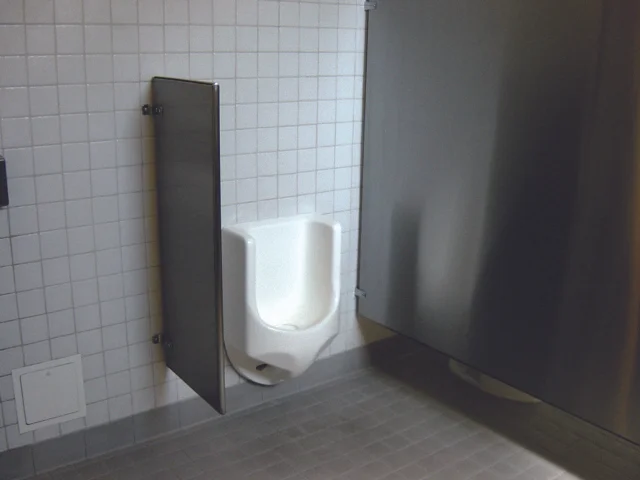When it comes to water consumption, no-water urinals and new toilet technologies have advanced considerably in just the past few years. For instance, pressure-assisted toilets are becoming more popular, and we are likely to see more of these in the years to come. You’ve likely already seen pressure-assisted toilets; they are similar to the types of toilets installed on airplanes. They rely on compressed air to remove waste and, in so doing, use very little water—about 1.1 gpf (gallons per flush). This compares to 1.6 gpf or more with a standard toilet.
However, these toilets tend to be more costly than traditional toilets, and installation issues may arise in some facilities. But their added costs should be balanced with the reduction in water consumption. Water rates throughout the United States are escalating, in some cases quite alarmingly. These toilets can help minimize the impact of those rate increases.
Along with pressure-assisted toilets, another option is a dual-flush toilet. These have been around for a while but have further improved in recent years. There are even sensor-controlled dual-flush toilets now.
These systems use considerably less water to remove liquid waste and just a bit more (than that used for liquid waste) to remove solid waste. Typically they reduce water consumption to about 1.25 gpf. While the flow rate is not as low as that of a pressure-assisted system, it still is lower than the federally mandated 1.6 gpf, and these toilets are typically less costly than a pressure-assisted toilet. Additionally, kits are available that can convert a standard toilet to a dual-flush system.
As for urinals, big changes are in store, due in part to the California drought. Starting in 2016, new urinals installed in California facilities can release only 0.5 gpf. This is lower than the typical 1 gpf for standard urinals and as much as 3 gpf for older urinal systems. We expect to see most manufacturers, due to the size of the California market, develop more urinals that use only 0.5 gpf.
However, many building owners are taking this a step further and installing no-water urinals. No-water urinals, as the name implies, use no water at all and typically cost far less to select and install than traditional urinals. This is because they have no flush valves and fewer plumbing requirements. Also, restroom users tend to like no-water urinals because there is no need to “touch” the system at all, eliminating concerns about pathogens and cross-contamination.
New buildings in the planning stages should consider these and other new restroom technologies that help reduce water consumption. Along with reducing water consumption, installing these systems is a significant way to reduce facility operating costs as well, as water rates are expected to continue increasing.
Existing facilities have water-reducing opportunities available to them as well. No-water urinals typically can be installed directly over the footprint of a conventional water-using urinal. And selecting and installing a no-water urinal can be surprisingly inexpensive. Plus, their benefits can be considerable, in both reducing water consumption and addressing the rising costs associated with water.
For more information on how to reduce water consumption and use water more efficiently, please contact a Waterless Co representative.











